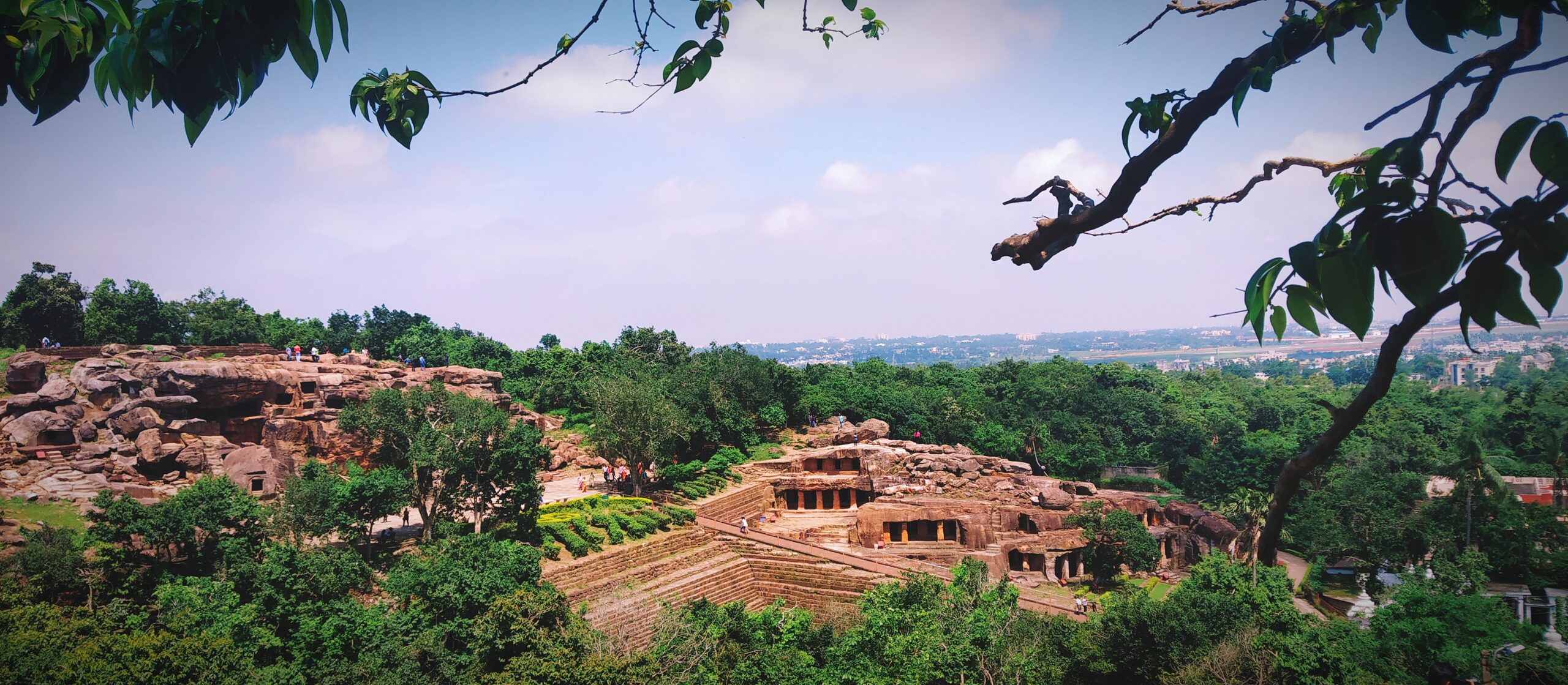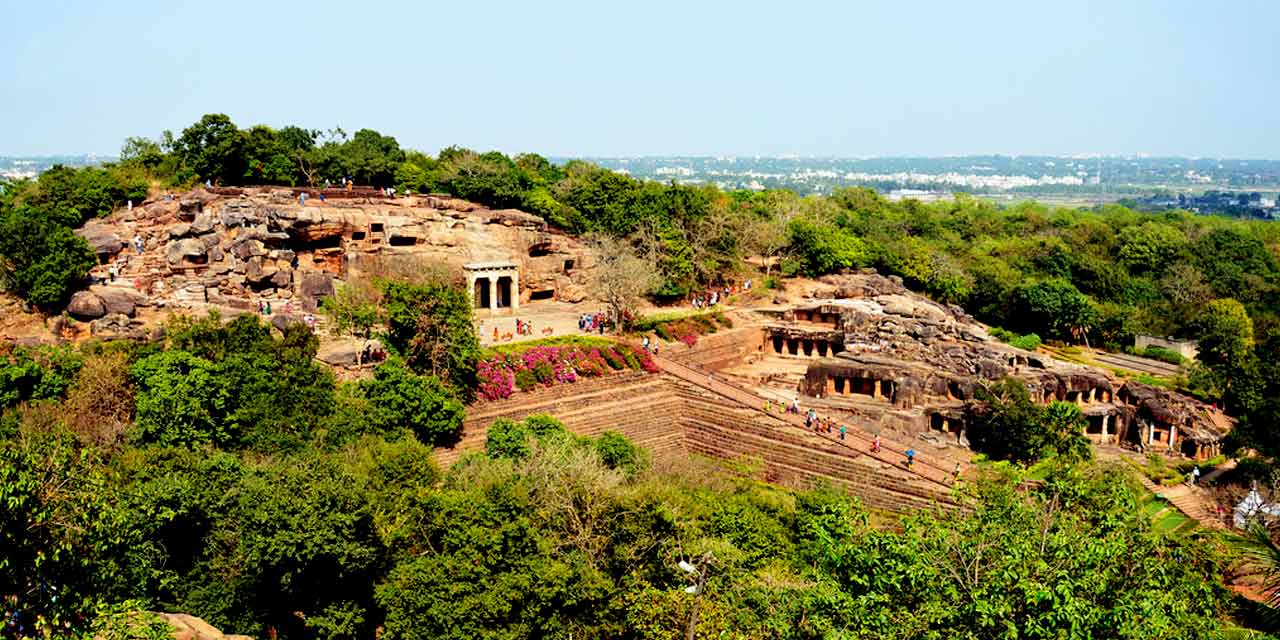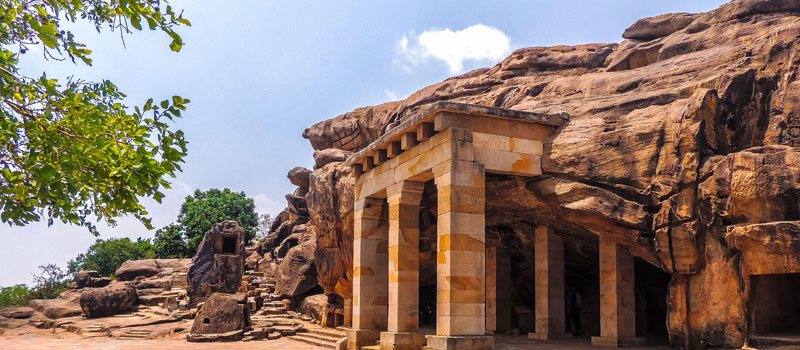
When it comes to uncovering the rich cultural tapestry of India, few places offer the allure and historical depth of Odisha. Nestled in the heart of this coastal state are two incredible archaeological marvels: the Khandagiri and Udayagiri caves. These ancient rock-cut wonders, located just outside the bustling city of Bhubaneswar, transport visitors to a bygone era of spirituality, architectural brilliance, and historical intrigue. In this blog, we will delve into the fascinating world of Khandagiri and Udayagiri caves, exploring their origins, significance, and why they are considered among Odisha’s hidden gems.
A Journey Through Time: The Historical Significance of Khandagiri and Udayagiri
The Khandagiri and Udayagiri caves date back to the 2nd century BCE, during the reign of King Kharavela of the Mahameghavahana dynasty. These caves served as residential quarters for Jain monks, offering them a tranquil retreat to meditate and practice asceticism. The rock-cut caves are adorned with intricate carvings, inscriptions, and motifs that shed light on the socio-religious practices of the time.
Among the most notable features is the Hatigumpha inscription in Udayagiri, which chronicles the achievements of King Kharavela. This inscription is one of the most important historical records from ancient India, offering insights into the political, cultural, and religious landscape of the period.

Location and Accessibility
Located approximately 6 kilometers from Bhubaneswar, the Khandagiri and Udayagiri caves are easily accessible by road. Visitors can hire taxis or use local transportation to reach the site. The proximity to the state capital makes these caves an ideal day-trip destination for history enthusiasts, culture seekers, and nature lovers alike.
Exploring Khandagiri Caves

The Architecture and Design
Khandagiri, also known as “Elephant Hill,” houses 15 caves that reflect a blend of religious devotion and artistic excellence. The most famous among these is the Rani Gumpha (Queen’s Cave), a two-storied structure featuring intricately carved walls, pillars, and arched doorways. The carvings depict scenes from Jain mythology, royal processions, and natural elements like animals and plants.
Must-Visit Caves in Khandagiri
- Rani Gumpha: Known for its exquisite carvings and spacious interiors, this cave exemplifies the architectural prowess of ancient India.
- Ganesh Gumpha: This cave features a carving of Lord Ganesha, showcasing the cultural exchange between Jainism and Hinduism during King Kharavela’s reign.
- Tatowa Gumpha: Famous for its parrot carvings, this cave offers a glimpse into the artistic sensibilities of the period.
The Panoramic Views
The hilltop location of Khandagiri provides stunning views of the surrounding landscape. Visitors can enjoy breathtaking sunsets and capture the serene beauty of Odisha’s countryside.
Unveiling Udayagiri Caves

The Historical Treasure Trove
Adjacent to Khandagiri, the Udayagiri caves are home to 18 rock-cut structures, each steeped in historical and religious significance. The Hatigumpha inscription, etched into the rock of Cave 14, is a highlight of Udayagiri. Written in ancient Brahmi script, this inscription records King Kharavela’s military conquests, administrative achievements, and patronage of Jainism.
Notable Caves in Udayagiri
- Hatigumpha: This cave is renowned for its inscription, which serves as a vital source of historical information.
- Ananta Gumpha: Known for its carvings of serpents, symbolizing eternity and spiritual rebirth.
- Vyaghra Gumpha: Featuring carvings of tigers, this cave highlights the artistic diversity of the complex.
Spiritual and Cultural Insights
The Udayagiri caves, like their counterparts in Khandagiri, were designed to support the ascetic lifestyle of Jain monks. The simple yet elegant interiors provided a serene environment for meditation and spiritual practice, reflecting the essence of Jain philosophy.
Architectural Brilliance: A Testament to Ancient Craftsmanship
The Khandagiri and Udayagiri caves are architectural marvels that demonstrate the advanced techniques and artistic sensibilities of ancient Indian craftsmen. Carved from soft sandstone, the caves feature:
- Intricate Carvings: Depictions of Jain Tirthankaras, animals, floral motifs, and scenes from daily life.
- Functional Design: Arched doorways, ventilation systems, and natural light optimization.
- Inscriptions and Symbols: Historical records and religious symbols that offer valuable insights into the culture of the time.
The Religious Harmony of the Era
While predominantly associated with Jainism, the caves also bear evidence of Hindu influences, showcasing a period of religious tolerance and cultural exchange. The coexistence of Jain and Hindu elements reflects the inclusive ethos of ancient Odisha.
Tips for Visiting Khandagiri and Udayagiri
- Best Time to Visit: The ideal time to explore the caves is between October and March when the weather is pleasant.
- Guided Tours: Hiring a local guide can enhance your experience by providing detailed insights into the history and significance of the caves.
- Photography: The scenic beauty and architectural grandeur make these caves a paradise for photographers. Don’t forget to capture the sunset views from Khandagiri Hill.
- Comfortable Attire: Wear comfortable shoes and clothing to navigate the uneven terrain.
Why Khandagiri and Udayagiri Are Must-Visit Destinations

For History Enthusiasts
The caves offer a window into ancient India’s history, from the reign of King Kharavela to the evolution of Jainism. The inscriptions and carvings serve as primary sources of historical knowledge.
For Spiritual Seekers
The tranquil environment of the caves provides a perfect setting for meditation and introspection. Visitors can experience a sense of peace and connection with the spiritual practices of the past.
For Art and Architecture Lovers
The intricate carvings and architectural brilliance of the caves are a testament to the skill and creativity of ancient craftsmen.
For Nature Lovers
The lush greenery and panoramic views surrounding the caves add to their charm, making them an ideal destination for nature enthusiasts.
SEO Keywords for This Blog
- “Khandagiri and Udayagiri caves”
- “Odisha’s hidden gems”
- “Ancient rock-cut caves in India”
- “Historical places near Bhubaneswar”
- “King Kharavela reign”
- “Jainism in Odisha”
- “Hatigumpha inscription”
- “Cultural heritage of Odisha”
- “Places to visit in Odisha”
- “Day trips from Bhubaneswar”
Final Thoughts: Preserving Odisha’s Legacy
The Khandagiri and Udayagiri caves are more than just historical monuments; they are a testament to Odisha’s rich cultural and spiritual heritage. As we marvel at their beauty and significance, it is crucial to preserve and protect these treasures for future generations. Whether you are a history buff, a spiritual seeker, or simply a curious traveler, a visit to these caves promises an enriching experience that will leave you with a deeper appreciation of India’s glorious past. So, pack your bags, embark on a journey to Odisha, and let the Khandagiri and Udayagiri caves unveil the stories of an ancient civilization that continues to inspire awe and admiration.
